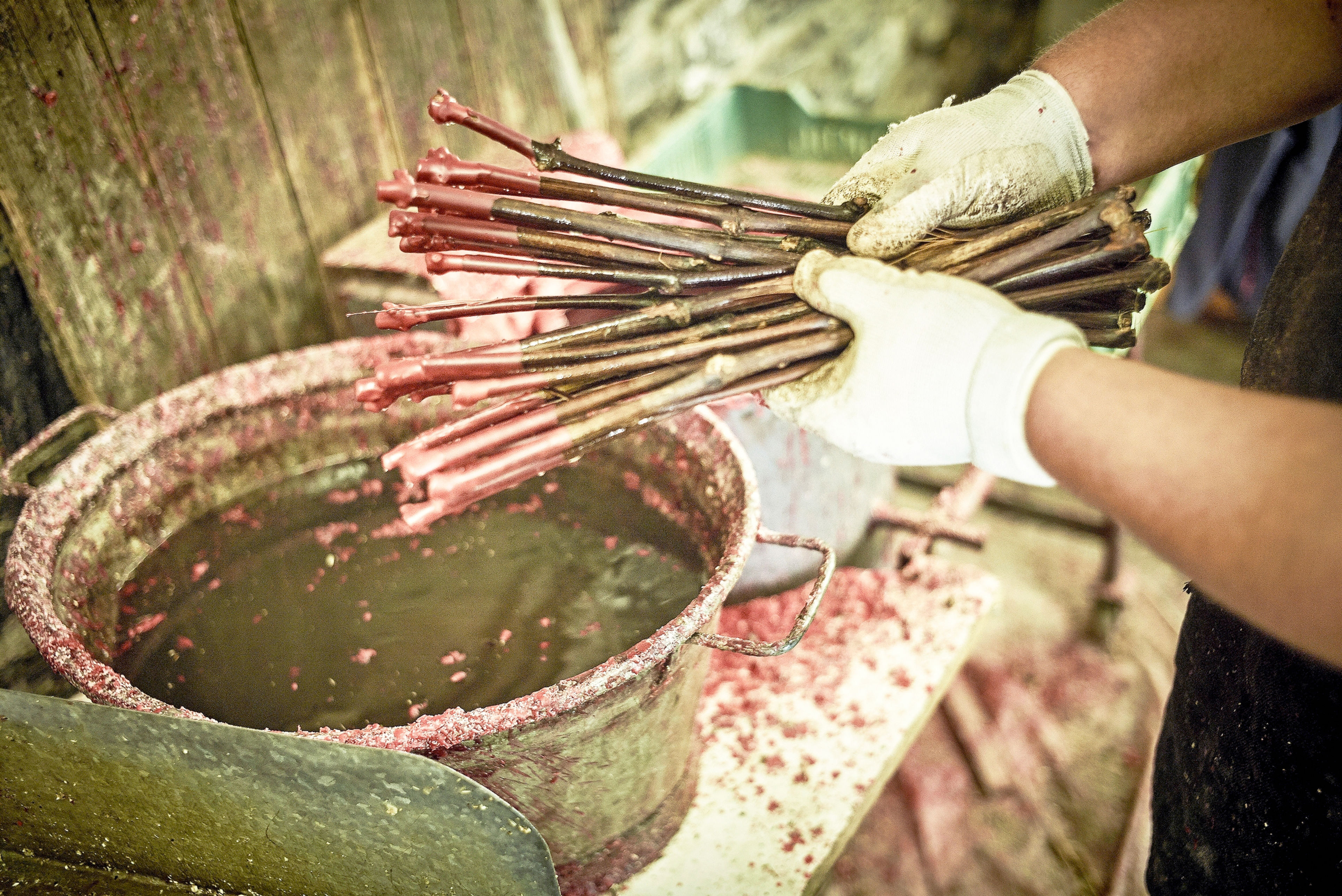Vine nursery

With 4,825 hectares of vineyards, Valais is the most important wine-growing canton in Switzerland. The vines on around 3% of this area are replaced each year.
Eric Germanier is one of five experts from Valais who grow new vines in their nurseries. It is a tough job, to which his tanned and calloused hands bear witness. It requires extensive knowledge, a high degree of precision and impeccable cleanliness. «24 steps have to be completed before the young vines can be put on sale.» The process starts in the autumn, when Swiss government experts inspect the nurseries where the young plants are growing and the existing vines that produce the shoots for grafting. These checks ensure the authenticity and purity of the grape varieties, as well as serving to detect the presence of serious diseases, such as flavescence dorée.
24 steps have to be completed before the young vines can be put on sale.
When the vines are pruned in January or February, the shoots, which are known as grafts, are collected. Eric Germanier and his 10-strong team cut them off bud by bud and sort them according to variety. «If a bud falls to the ground, we leave it there to prevent one variety getting mixed up with another and ending up in the wrong crate,» Eric Germanier explains. «We label absolutely everything! We’re fanatical about labels and always have some in our pockets,» he laughs.

To obtain a high quality plant, you need a stock-vine and graft of the same calibre. The grafting process is carried out using a machine. Eric Germanier decides on which stock-vines – which he buys in France – to use, depending on his customers’ requirements and the soil type. The grafting is performed by making a double incision to join the two parts. The grafted cutting is immediately put into wax as «the greatest danger is of it drying out.» The cuttings are stored in crates with sawdust and then left in a room at a temperature of 30°C to encourage the graft and stock vine to weld together and form the vine.

The cuttings are planted out in the soil from mid-May, where they grow over the summer. A drip system is used for irrigation and the planting is carried out on plastic sheeting. In November, Eric Germanier and his team carefully remove the plants. Each one is rechecked to ensure the graft is properly established and that the rooting is consistent. «We generally get rid of 30–40% of the crop,» the expert reveals. In the end, around 300,000 plants go on sale. How much does a young vine cost? «Three francs forty,» is Eric Germanier’s reply.
The varieties for which the greatest demand exists are Pinot Noir and Chasselas, followed by Sylvaner and Païen (or Heida). Pinot Noir and Chasselas are also the most grown varieties even though for a number of years there has been a constant increase in the production of local grapes, such as Petite Arvine, Cornalin, Païen and Humagne Rouge. The nurseries and winemakers of Valais watch over their heritage. In cooperation with the Valais Office of Viticulture and Agroscope in Changins, the Valais Society of Vine Nurseries has set up a programme to protect its heritage called Sélection Valais. It provides winemakers with hundreds of different varieties and ensures genetic diversity and a guarantee of quality.
Text: Monique Ryser Photos: Sedrik Nemeth
Elia Zurbriggen and his new life as a restauranteur
Read now



